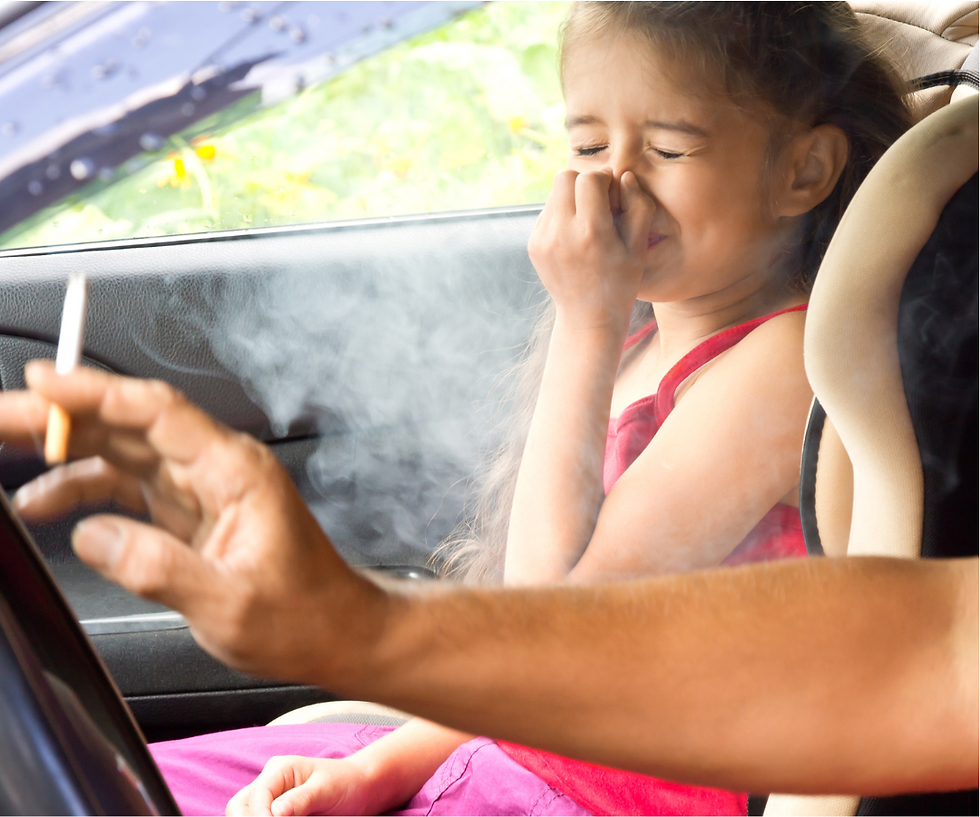Secondhand Smoke: Dangers and Risks
- Meek Stalling

- Oct 17, 2022
- 2 min read

What is secondhand smoke?
Secondhand smoke is smoke you don’t mean to breathe in. Exposure to secondhand smoke comes from side stream or mainstream smoke. Burning tobacco products, such as cigarettes, cigars or pipes, releases side stream smoke. A person actively smoking nearby exhales mainstream smoke. Both sources release harmful chemicals into the air that affect nonsmokers.
What makes secondhand smoke dangerous?
All smoke from burning nicotine products contains harmful chemicals (toxins). Even nonsmokers inhaling other people’s smoke breathe in these toxins. Side stream smoke from the end of a cigarette, cigar or pipe is unfiltered. It has more harmful toxins than mainstream smoke that someone breathes out.
How does secondhand smoke affect nonsmokers?
Secondhand smoke damages the body in many different ways. Adults exposed to secondhand smoke may experience:
Cardiovascular (heart, veins and arteries) disease like high blood pressure, atherosclerosis, heart attack or stroke.
Lung problems like chronic obstructive pulmonary disorder (COPD) and asthma.
Increased risks of lung cancer and cancers in the brain, bladder, stomach, breast and more.
Children exposed to secondhand smoke are more likely to experience:
Frequent coughing, sneezing, shortness of breath or other breathing problems.
Frequent ear infections.
Frequent and more severe asthma attacks.
Respiratory infections, such as bronchitis or pneumonia.
Damage to eyes (like cataracts) and teeth (like tooth decay).
Learning and behavior problems.
SIDS (sudden infant death syndrome).
When does secondhand smoke damage start?
Studies have shown that damage from secondhand smoke occurs in as little as five minutes:
After five minutes: Arteries becomes less flexible, just like they do in a person who is smoking a cigarette.
After 20-30 minutes: Blood starts clotting, and fat deposits in blood vessels increase the risk of heart attack and stroke.
After two hours: An irregular heartbeat (arrhythmia) can develop and trigger a heart attack or other serious cardiac problems.





Comments